Public Functionary: Sustainable Support, Collective Power
A conversation with Leslie Barlow on the emergent process of Public Functionary: on shared visioning, mutual transformation, and the art of holding others without losing ourselves

There are certain individuals, organizations, and movements that embody the Octavia Butler phrase “change is constant.” Public Functionary and the artists who comprise it are among these. Since its founding in 2012, PF has evolved from the traditional sense of a gallery space to an experimental realm for expansive ideas, delving deeper into critical conversations surrounding change.
In thinking about interviewing Leslie Barlow about her work as PF Studios Director, I was inspired by Butler’s explorations of human relationships regarding change through the lens of adrienne maree brown’s future-shaping book, Emergent Strategy. Streams of ever-mutating, emergent patterns are apparent, if we look for them—or rather, if we’re open to them.
“In our complex world, facilitation and mediation skills are as important for individuals as they are for organizations. How do we practice them in ways that align with nature, with pleasure, with our best imagining of our future? How do we practice the art of holding others without losing ourselves?”
adrienne maree brown, Emergent Strategy
These questions are at the heart of my interview with Leslie Barlow.
Within Public Functionary, Leslie’s focus is PF Studios, their emerging artist studio program in the Northrup King building, where she provides direct mentorship and organizes artists’ programming. Alongside Tricia Heuring (Artistic Director), Mike Bishop (Operations Director), and Ryan Stopera (PF Cafe)—as well as a team of essential production, operations, design, and curatorial members, all of whom can be found here—the artist-led space has gone through a constant state of radical shift, transformation, transition, and listening, in order to land on their current role: providing sustainable support and collective power to artists.
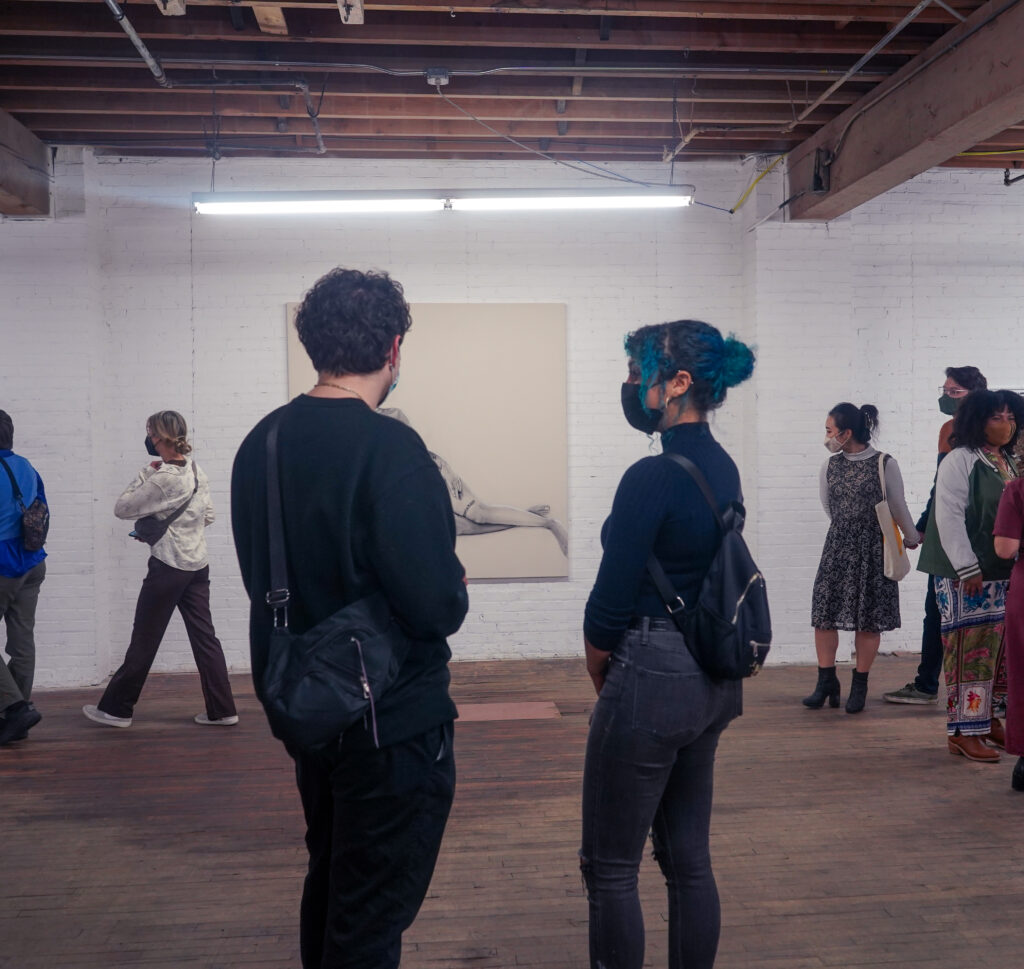
Leslie barlowA lot of the artists within PF Studios also take different leadership roles, and that was important from the beginning of starting PF Studios. This wasn’t something that I was doing alone, or a couple of us were doing, but the artists were direct decision makers in how the program grew and the different things that the program does. When we meet—and we meet weekly—we vision together, and that’s a shared visioning.
Juleana EnrightWithin that shared visioning, how do you work towards attending to the relationships and power dynamics in the rooms you hold, to create structures supporting mutual transformation and collaboration?
LBI move through a lot of different spaces: the classroom, Public Functionary, PF Studios, the work I do collaboratively in my own studio. I feel like it’s really important when you’re moving in space with other people—community members, potential collaborators—that you humble yourself. That’s one thing that I do to initially navigate those power dynamics. It doesn’t mean that I’m not acknowledging what I bring to the table, but I’m often quick to share that I don’t have all the answers, and that I’m interested in a knowledge and energy exchange. In the classroom—where there’s a natural hierarchy—I try to work actively to disrupt that; the same with PF Studios. A lot of the decisions around what kind of shows we want to do, what kind of workshops we want to have, and conversations we want to gather, that’s all decided by the collective.
I know what it’s like to not feel seen or heard in many different spaces as a woman of color, as a Black woman. I feel like it’s really important for me to try to create a different experience for the people I work with, not just to disrupt that pattern, but also because it attends to what I personally went through. It’s kind of funny, but I’ve never really totally felt comfortable in leadership roles. Maybe it is partially because there weren’t a lot of spaces that invited me to lead. But the truth is, I just prefer working collaboratively, sharing power and feeling supported in making decisions. That’s also one of the reasons that led me to Public Functionary and wanting to be a part of this group of people, that we could work together.
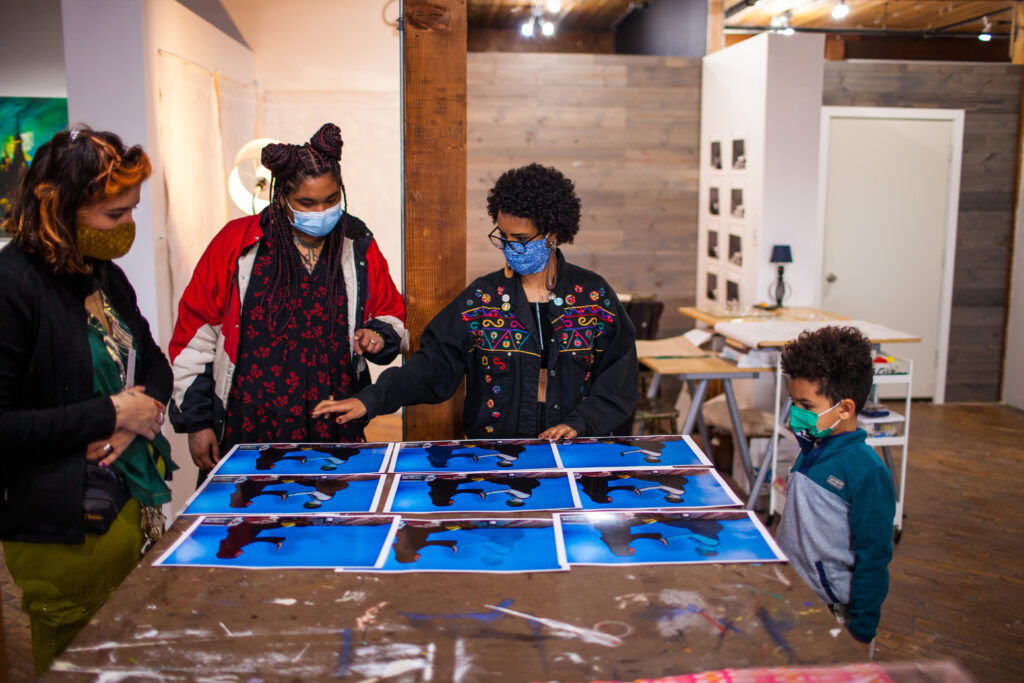
JEIn terms of that collaboration style, you’ve talked about having a commitment towards building a more diverse, sustainable, and liberated artist community, built on cooperation and trust. It reminds me of this quote by Grace Lee Boggs: “Movements are born of critical connections rather than critical mass.” With that emphasis on authentic relationships, listening with the senses, the body and the mind, how do you use trust to realign the focus less on critical mass and more onto critical connections?
LBI love that quote by Grace Lee Boggs. After you reached out, I revisited the Emergent Strategy book. I loved that book. It was kind of amazing to go back and reread some of my dog-eared sections and be like, “Oh, hey, I’m doing some of this stuff.” I was talking about this with Mike ahead of this interview. Whether we’re conscious of it or not, we take that information in, and it comes through us and through the work.
I also think of what is within my capacity and what is within our capacity as an organization. It’s taken a lot of time to realize that you cannot do it all. Those critical connections are really most important, because together we can do it all. Through relationships and all the different types of knowledge and experiences that can connect in a room, we each take our part, which is what I really love about how Public Functionary operates. We really lean into our skills and what we’re passionate about. The artists within PF Studios are very much invited to help lead in the direction of the organization as well.
I think a specific example of how we lean into the critical connections is how PF Studios started. In 2019, we started with one studio and nine artists. We really quickly realized—after we had our first artist call and we got 30 applications for nine studio spots—there was a clear need for affordable studio spaces. Not just that, but for an artist community that was centered around minoritized identities—folks that have not felt centered in our arts institutions, in academia, and just art space in general—and allowing for a space to create some sort of safety within it. And also just to be in relationship with each other and collaborate. That’s just so desirable. It was something I really wanted early on in my career and I didn’t really find. We knew pretty quickly after the first nine artists moved in that we were going to be growing the program. We just didn’t know how big.
In 2020, we added one more studio space, for two reasons. One, we wanted to be able to serve more artists, but also, the artists in that program really helped shepherd that decision. We wanted to have a natural progression to larger studio spaces in the Northrup King Building. Our first studio became what is known as the Incubator Residency, a first studio space where you get to have this experience for the first time and you’re really supported, and then slowly, gradually, you kind of move into a more expensive, larger studio space that is less of a directed space. That decision came out of conversations with the artists who were in that original cohort.
We expanded from nine to 15. Then in 2021, we added six more artists. This year we’re adding five more artists. As we were making that expansion, we realized we were going to have to find some balance between wanting to serve as many artists as possible—addressing a very clear need and gap here—but also wanting to hold the relationships with those artists tenderly. I want to know every artist that’s in our program. I want to be able to have one-on-one conversations with them. I know my co-directors do as well. There’s only so many relationships that you can manage.
It’s hard to put a limit on that kind of stuff. You want to be able to welcome as many folks that see this space as one that will help them get to the next step in their practice and help them create relationships with other artists of color. You want everyone to be able to access that. But we aren’t going to be able to do it right if we can’t be present and engaged in all those relationships.
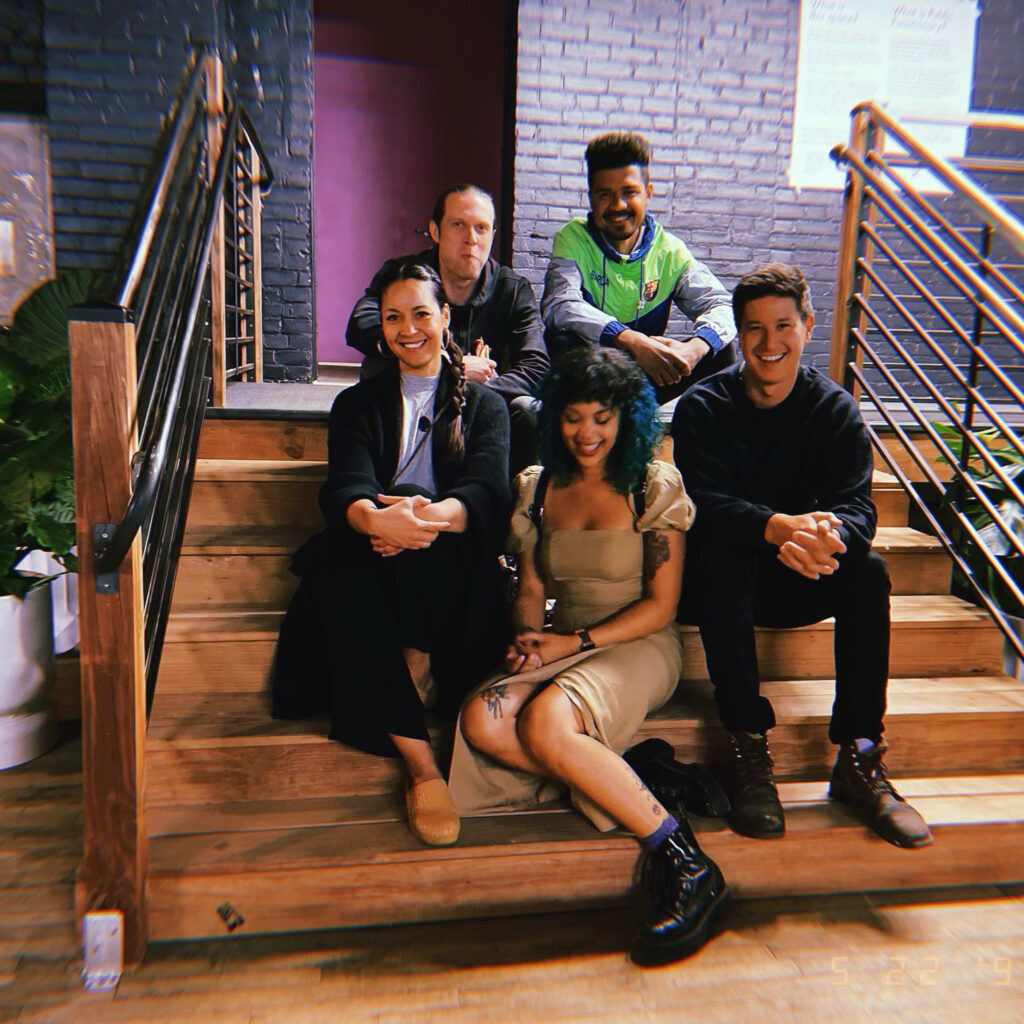
I’ve already named the core team of me, Mike, Tricia, and Ryan, but then there’s also this larger PF team who take on important roles at Public Functionary. Artists are also regularly asked their opinions on things as we are moving into different spaces, which helps build relationships and trust, because folks are given space to voice their opinions and actually see their interests and opinions affect change.
We also build relationships through something called Conversation Lab. Conversation Lab is a program within PF Studios that grew out of conversations with the original cohort about wanting a space to be in dialogue with each other about the shit that we go through in the Twin Cities art scene, to talk about building our professional careers, and to talk about our artwork with each other. They needed a vulnerable space and a platform specifically for that. Maiya Lea Hartman is the PF Studios artist who leads the Conversation Lab, along with Shana Kaplow who is a professional artist from outside the studios. Those spaces provide ways for the artists to be together in an intentional space to be vulnerable, and to have those conversations facilitated by a peer and someone who has had a decades-long art practice. It takes a lot of work to create the kind of space where everybody can see a pathway to leadership, and that we all can work together to build something, to build a little microcosm of how we want to see the world.
I think it’s just really understanding that people are the experts in their own experience. We started PF Studios with the intention of letting those artists lead. I think that’s very reflective of me being a practicing artist, and really understanding that every artist has different needs. That is the only way a studio program is going to work—if it is flexible and adaptable, and also can change as different artists express different needs.
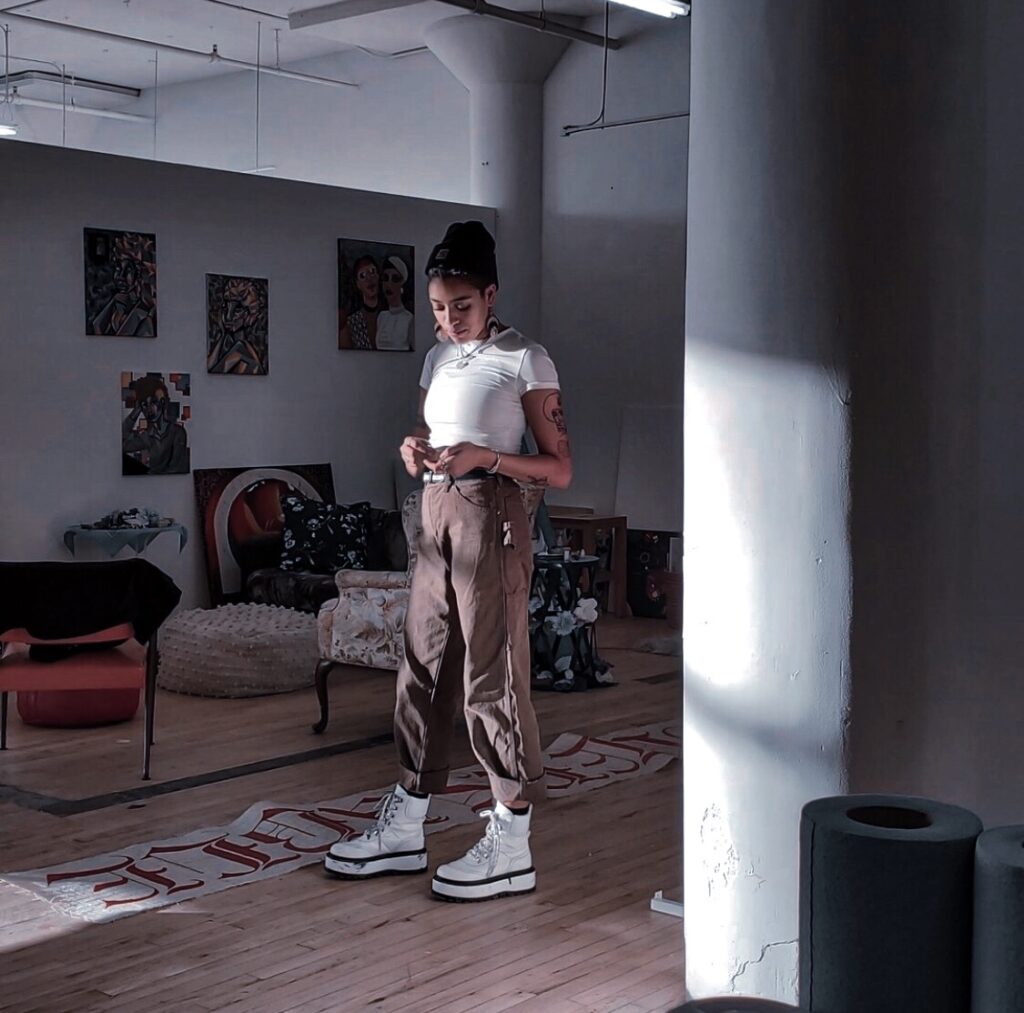
JEI think having something like the Conversation Lab, where people can feel free to not only voice what’s going on, but actually see change happening through that—it’s not only listening to the artists and what they want, but listening to yourself as an organization and knowing that you can only do so much with capacity. If you try to expand without that awareness, then you’re not going to hold the people that you want to foster. There seems to be a radical shift—led by BIPOC-led art organizations specifically—of practicing the art of listening, in order to foster connections and lead movements. How do you use this approach in the projects you’re involved in and as a PF Director?
LBThe art of listening, I think a lot about that in my own practice. I think it is important to bring it back to my artwork. I work with people all the time in my own studio practice. For me to paint someone else, there’s a lot of listening and trust involved in that exchange. Whether it’s a commission or it’s a piece for my own body of work, you’re building some type of relationship and dialogue there. I think of the exhibition Within, Between, and Beyond at the Minneapolis Institute of Art last year. That show was a three-year process of slow conversations with community members. We would have these conversations, then record them for the videos, and that would serve as inspiration for the paintings, the photos, or even a collaboration. You have to be an active listener when you’re doing something like that if you’re trying to bring forward any kind of authenticity in those representations. When you’re sharing stories that you’re connected to, but also aren’t yours, I think it’s really important to just be super engaged and genuinely interested in that connection. And that shit takes time. You can’t force it. It’s a long process.
JEStephen Covey, in his book The Speed of Trust, talks about how establishing trust intentionally helps you and your organization to forgo the time-killing, bureaucratic check-and-balance processes that are so often deployed in lieu of actual trust. He implores that trust is at the heart of everything. It’s definitely at the heart of collaboration, organizing and systems change. Where do you see this showing up in your work and in PF Studios?
LBOne, I didn’t just randomly go to Mike and Tricia and be like, “Hey, I have this idea for a studio program.” I already trusted them. I saw what they had been building with Public Functionary six years prior to our conversation about the studio program. I felt safe in the space that they had created, and I felt seen because they had engaged me in a solo exhibition—my first solo exhibition in Minneapolis—when no other art spaces were checking for me. They saw something in what I wanted to say and the work I was making; they believed in it.
I knew I didn’t want to do a studio program alone. Tricia and Mike had shared with me that Public Functionary was going to be in a transitional time, that they were going to be closing their gallery space. They trusted that this vision of the studio program was going to be a great next iteration of their work.
Those first nine artists had no idea what the studio program was going to be. The artists who applied also trusted and saw the work that I had already been doing. They saw the work that Tricia and Mike were doing at Public Functionary and they trusted in that vision. They trusted us to build a space that they could grow in, that would be worth their time and their energy and their presence. That first cohort, I’m so thankful for them and their enthusiasm around what we were trying to do, and also all of their ideas, because that helped us grow to where we are today.
I think early on, Mike, Tricia, Ryan, and I realized that we all wanted to trust each other to do our own part. What we’re building is kind of massive and it’s really ambitious, so together we all need to be trusted to lead in our areas. They overlap; they connect. There’s a lot of convergence there. If we aren’t each really leading, it might not work. We really trusted each other to do what we do best.
I was talking to Mike about this interview and he said that what he loves about how adrienne maree brown frames the speed of trust is the quote: “Trust the people and the people will trust you.” He thinks about that quote a lot. That is totally how I feel like our entire organization operates. We are a people-centered organization. If people didn’t want to make art with us, share their art with us, share their communities with us, there wouldn’t be a Public Functionary. This platform is really about creating space—not only for us to build Public Functionary, but also for the community to do the same.
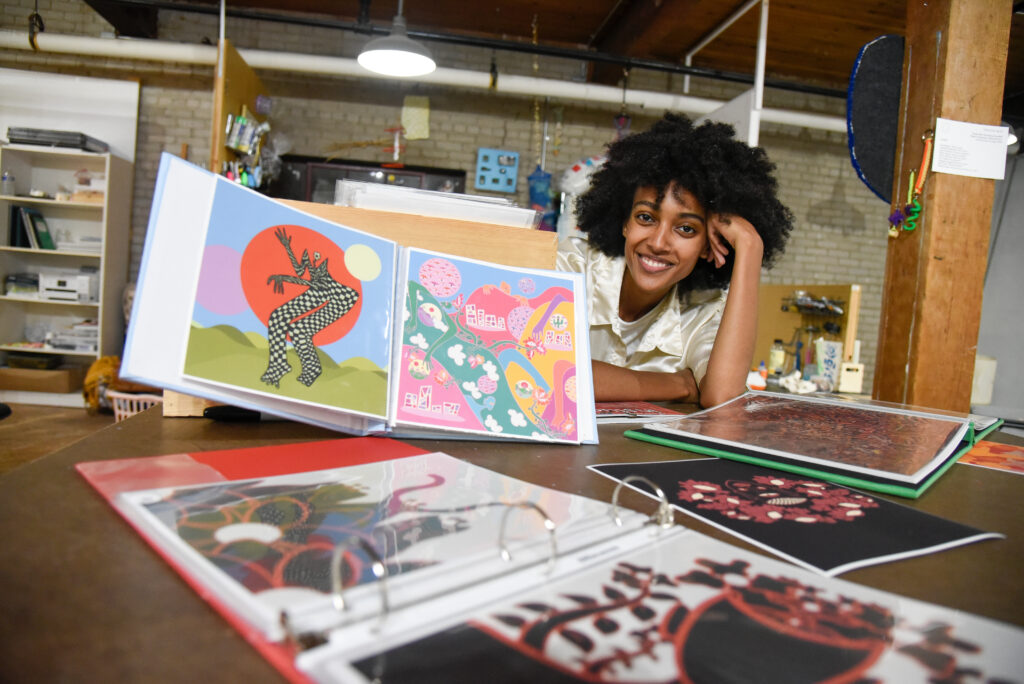
JETalking about adrienne maree brown, I think it’s interesting the way that she talks about space in general: “Space is never fixed by literal, physical dimensions. It varies according to histories, dynamics, emotional nuances, moods, pressures. It does change. It is change.” She talks about offering change at an individual and then collective level. And that facilitation is the hub or the commitment for the power of the collective. You talked before about functioning outside of a hierarchical structure, because you’re an artist yourself. What does that collective power mean to you? Is there anything that she says about space that resonates with you when you’re thinking about PF Studios and the programming?
LBWe are clearly much more powerful as a collective, as a community, versus individually. I think adrienne maree brown speaks on this in Emergent Strategy, how we each are important pieces of a whole. I’ve seen that play out in the work that we do at Public Functionary.
She also talks about this idea of fractals, that building within yourself and then building within your immediate community becomes this pattern or echo—moving from the micro to the macro. I definitely see that in what we’re building at Public Functionary. Through the work we’re able to do on a smaller scale, we can envision what a just and liberated world would be, could be, will be. That doesn’t mean we always get it right, but we are able to work through those things with our smaller group of people and see what we can build together.
JEIn regards to sustainability and intentional care while working collaboratively in artistic relationships, I’m thinking of how we hold others while not losing ourselves. How do you create ecosystems within yourself and within PF Studios to achieve that balance?
LBI don’t even know if I don’t let it overtake me. I feel like I’m very much learning, still learning how to separate those things. I don’t even know if I do want to. It all merges for me. Every space that I’m in, the work that I do in the studio, I feel like it all bleeds into everything else. I’m in a leadership role, but I try to step back from that being and honor the brilliance of all the people that we work with. There’s just so much overlap. It’s hard to really see those things as separate.
Tricia uses this phrase “arts ecosystem” a lot to describe our work, because we have space for the artists to make work through the studio program. We also have a gallery space for artists to show work, both in the studio program and from outside of the studio program. That space can also host events, whether it’s a concert or an artist talk or a book reading, and there’s a lot of openness within that. In addition, a big focus for us is having our work be an economic driver for artists. Whether the gallery space becomes a platform for an artist to build their presence in the arts, or the studio program through the subsidized rent, or us assisting them with project opportunities and grant applications—it’s just interesting all the different kinds of spaces that Public Functionary taps into. We also employ the artists in the program in different positions within the organization. So, it is this ecosystem. It’s also a great way for us to be able to give each other feedback on all the layers of the work that we do. We’re kind of tapped in in all these different spaces.
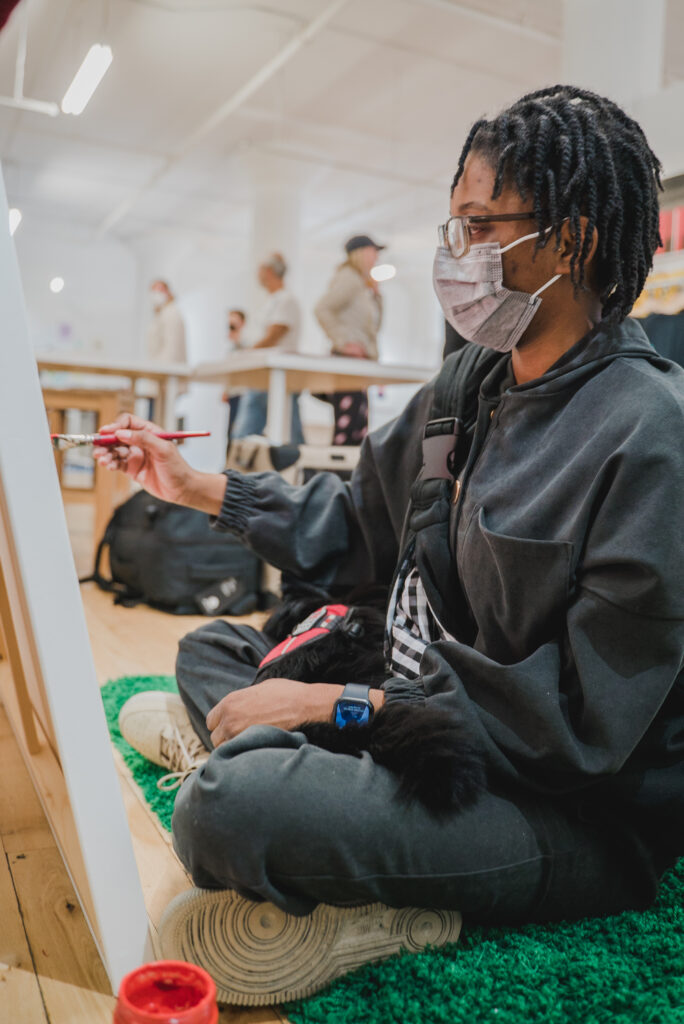
JEWhat role does transformative justice and building resilience play in your work at Public Functionary and in your own practice?
LBThis is a good question! I’m sure there are multiple definitions of transformative justice, but I’ve always thought of that language being used in terms of building support and safety for a person or people being harmed, and taking steps to make that harm less likely in the future. I’m not sure my art practice can say it’s doing all of that, but I guess there’s elements of transformation and justice, in terms of creating abundant space for marginalized and minoritized stories and experiences and bodies within my work. My work definitely seeks to transform narratives and create platforms for conversation and representation, which is one part of healing myself, ourselves, our communities. Our visual culture has a lot of power, and it can be used in many ways.
When I think of transformative justice in terms of the work at Public Functionary, I think about getting in right relationship with each other and building together the kind of world we want to live in. One where our voices, ideas, bodies, and creations are valued. Through collective brainstorming and working to address equity issues in the arts at our scale, we can work on immediate needs and issues we experience, while also working towards a long-term vision of justice and liberation.
JECan you talk about the current studio artists at PF right now and what’s most exciting about their work?
LBOh god, I don’t want to leave anyone out because honestly each artist is making work that is distinctive and compelling. We have 21 visual artists-in-residence that work out of three different studios, and we are opening our final studio in November and adding five more artists. We just mounted our annual all-studio exhibition Smoke and Ground at Public Functionary, guest curated by Adrienne Doyle, and you can see what I mean just walking through the gallery. It’s mesmerizing. What’s really interesting is there are these through lines naturally happening through the work of the artists in PF Studios, despite the many different materials and perspectives. It’s exciting to see that in addition to the artwork they create. So many of the artists we get to work with are also contributing to important justice work, youth work, community-building work, and conversations in the Twin Cities and beyond. There’s a convergence of energies here that is palpable and liberatory. It’s a continual affirmation on how space is important. Perhaps that’s what’s most exciting is that the studio community here is more than a collective of creatives…it feels like a movement.
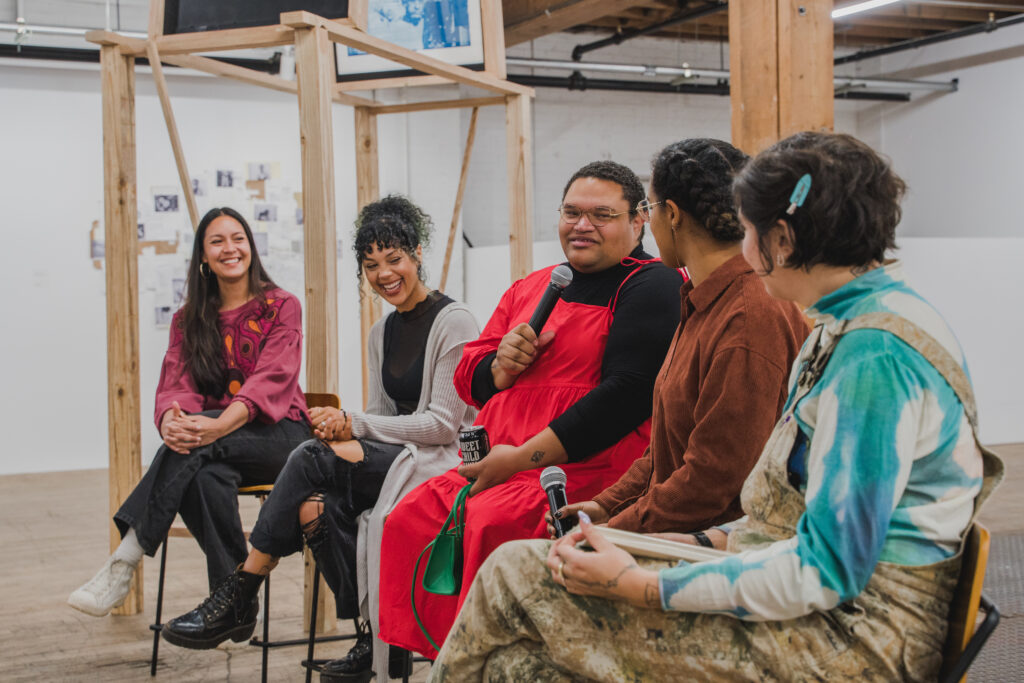
Leslie Barlow is a visual artist based in the Twin Cities. She’s currently a presidential postdoctoral fellow at the University of Minnesota, and is a member of the Creatives After Curfew Mural Collective. She has her own studio practice, making art out of her studio in northeast Minneapolis since 2016. She’s the PF Studios Director, where there are currently four directors of Public Functionary. She is a seven year volunteer of the organization Midwest Mixed. With Midwest Mixed, she’s produced three conferences, various community events and dialogues around race and identity, particularly related to mixed race identity and transnational and transracial adoptee identity. Leslie is represented by Bockley Gallery. She exhibits work locally and nationally.